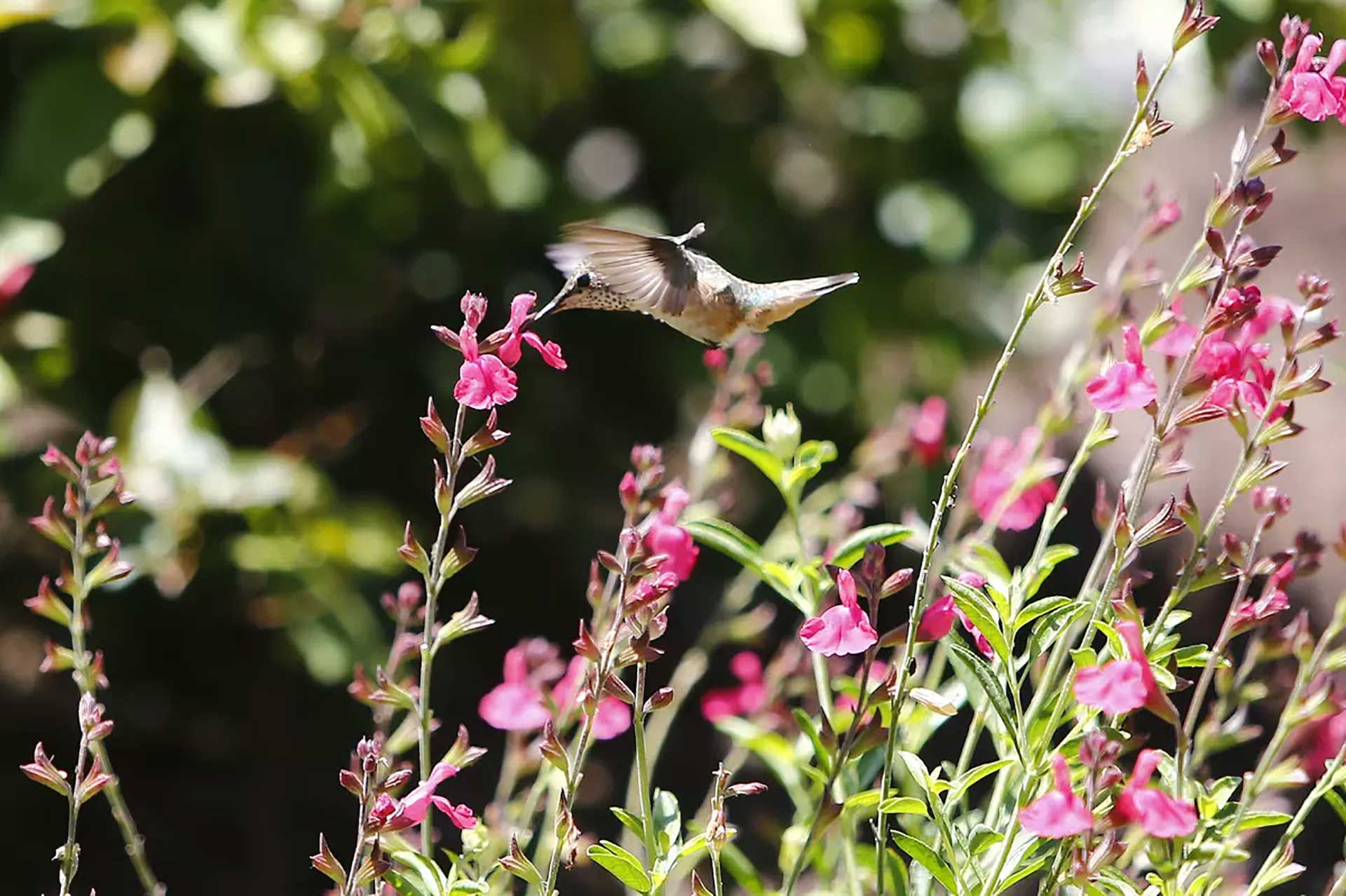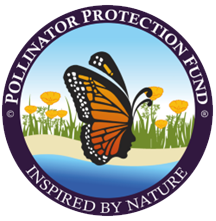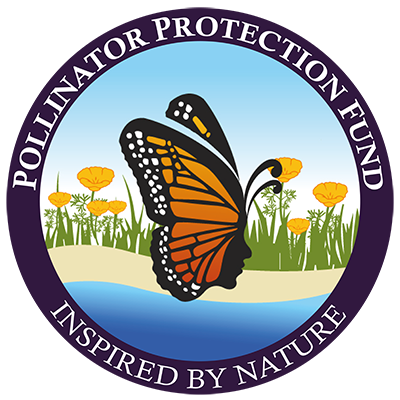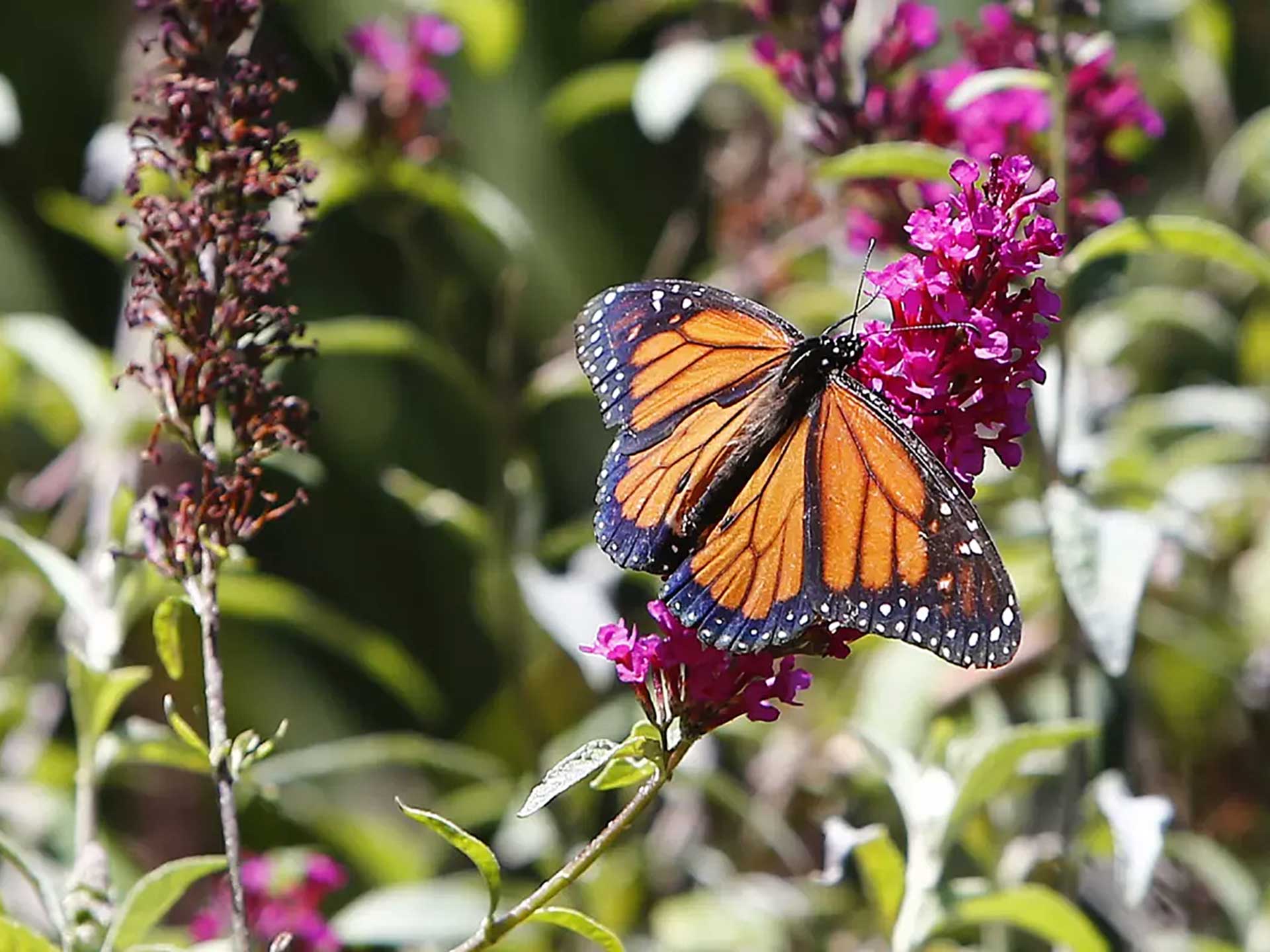The migratory monarch butterfly was placed on the endangered species list on Thursday by the International Union for Conservation of Nature.
Monarchs were once plentiful, but habitat destruction and rising temperatures have shrunk their estimated numbers to a fraction of their population in the 1980s, scientists say.
Laguna Beach resident Laura Ford looks at such a decline with concern.
Butterflies can be a symbol of regeneration with the metamorphosis they go through. When her grandmother died, Ford went to a local garden center to try to purchase some milkweed, the host plant for monarch butterflies.
There was none available. She then saw a caterpillar on the concrete and was inspired to procure milkweed elsewhere.

“It was that caterpillar going through the transformation and becoming a butterfly that encouraged me to start the nonprofit, seeing the process,” she said. “When I learned that the species was in trouble, I realized I wanted to do something.”
Ford launched the nonprofit Pollinator Protection Fund. She and her husband Michael built a pollinator habitat garden in Heisler Park last September, using narrow-leaf milkweed and other California native plants.
In recent weeks, they’ve started another habitat garden at Bluebird Park in Laguna Beach, tearing out old ivy and building beauty in the roughly 700-square-foot space. They’re also planning another garden for a steeper space in back of the park.
The group also recently put up educational signs. Now, the Fords are hoping to find more volunteers as they work with other organizations to expand their project down the coast.
Western monarch butterflies breed west of the Rocky Mountains before migrating to the California coast to overwinter.
“Our objective is to keep it growing,” said fellow Laguna Beach resident Pamela Knudsen, who Ford recruited as the Pollinator Protection Fund secretary. “Part of that is to produce a beautiful habitat for monarchs and other pollinators, but also to bring awareness to the general public of what’s going on.”

On a recent afternoon at Bluebird Park, the new garden appeared to be thriving. A pair of the familiar black-and-orange monarch butterflies flew in formation, as did other butterfly species. A hummingbird buzzed before landing on a salvia greggii (Autumn sage) plant.
“We’ve had native bees come to Heisler, which is fantastic to see,” Laura Ford said. “It means that we’re doing our job correctly. The monarchs are laying their eggs. About two weeks ago we were there and we saw a fresh monarch that had hatched and was drying out. It was the best feeling in the world because it’s like, ‘Everything we’ve been working on is working.’ You know it’s creating a positive effect and change.”
Ford said she has purchased most of the plants from Tree of Life Nursery in San Juan Capistrano, which specializes in native plants.
The Fords have also planted bright yellow sundrop flowers, which are favorites of bees, as well as California goldenrods, verbenas and other colorful plants. They recently teamed with a national nonprofit, the Monarch Joint Venture, which seeks to conserve the monarch butterfly migration.
“With a common and charismatic species like the monarch, we often encounter people that just didn’t realize that they’ve been declining for decades,” said Wendy Caldwell, executive director of the Monarch Joint Venture. “We’re at that point where we need to do something about it really quickly.”

An educational sign is posted at the habitat garden for western monarch butterflies at Bluebird Park in Laguna Beach.
(Kevin Chang / Staff Photographer)
Caldwell said something as simple as a milkweed pot on your front porch can create a small habitat for the endangered species.
“I’ve seen monarchs using milkweed in a crack in the sidewalk, so it’s not a species that requires a certain size or type of habitat,” she said. “Really, monarchs are able to utilize a lot of sizes and shapes of habitat. So these gardens, or the pot on your porch, they’re all an important contribution to monarch habitat.”
The garden at Bluebird Park has taken off almost as quickly as the giant metal rocket ship that sits just behind it, as part of the children’s playground there.
Longtime Laguna Beach resident Lew Moss, who lives just up the street, said the garden has added a lot to the park.
“We’re so proud of what they’re doing,” Moss said. “It’s delightful. We love butterflies also, so what they’re doing is just incredible.”


